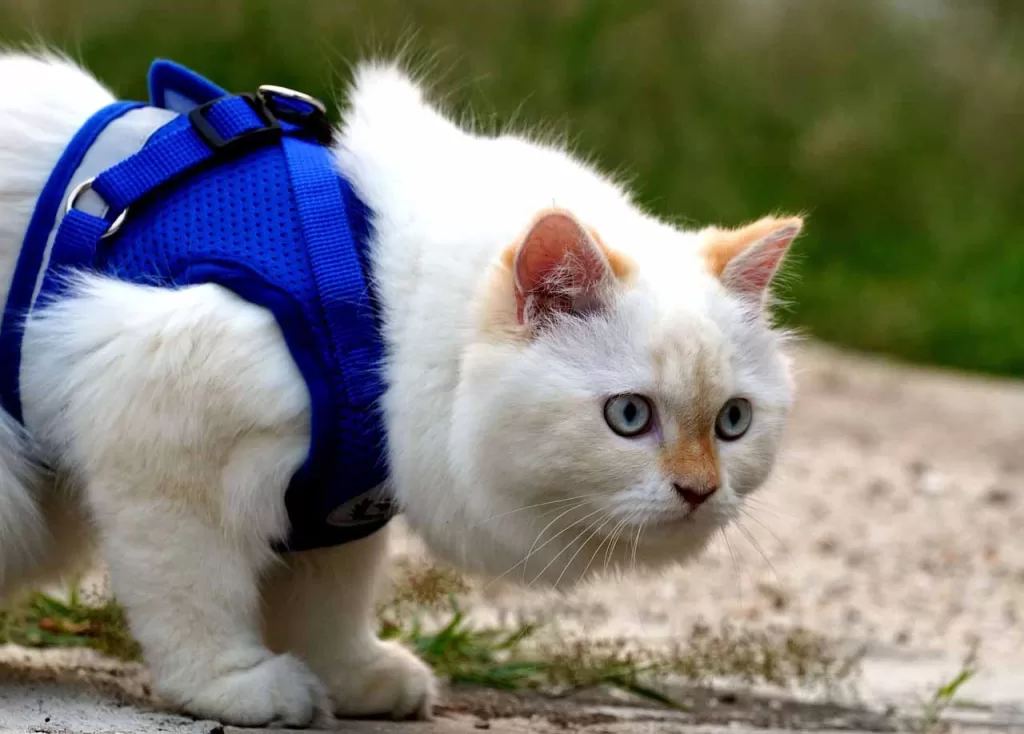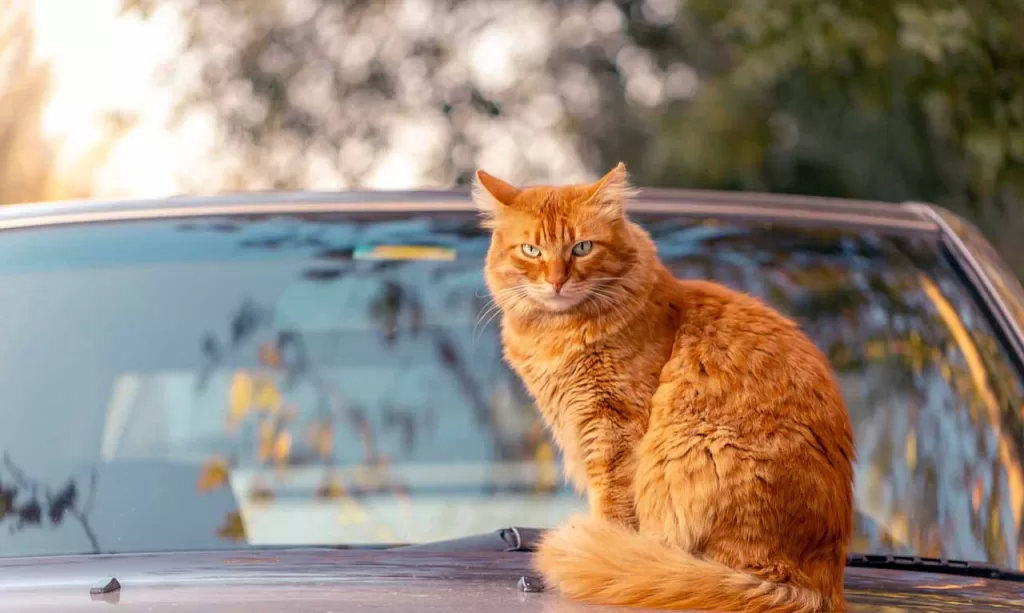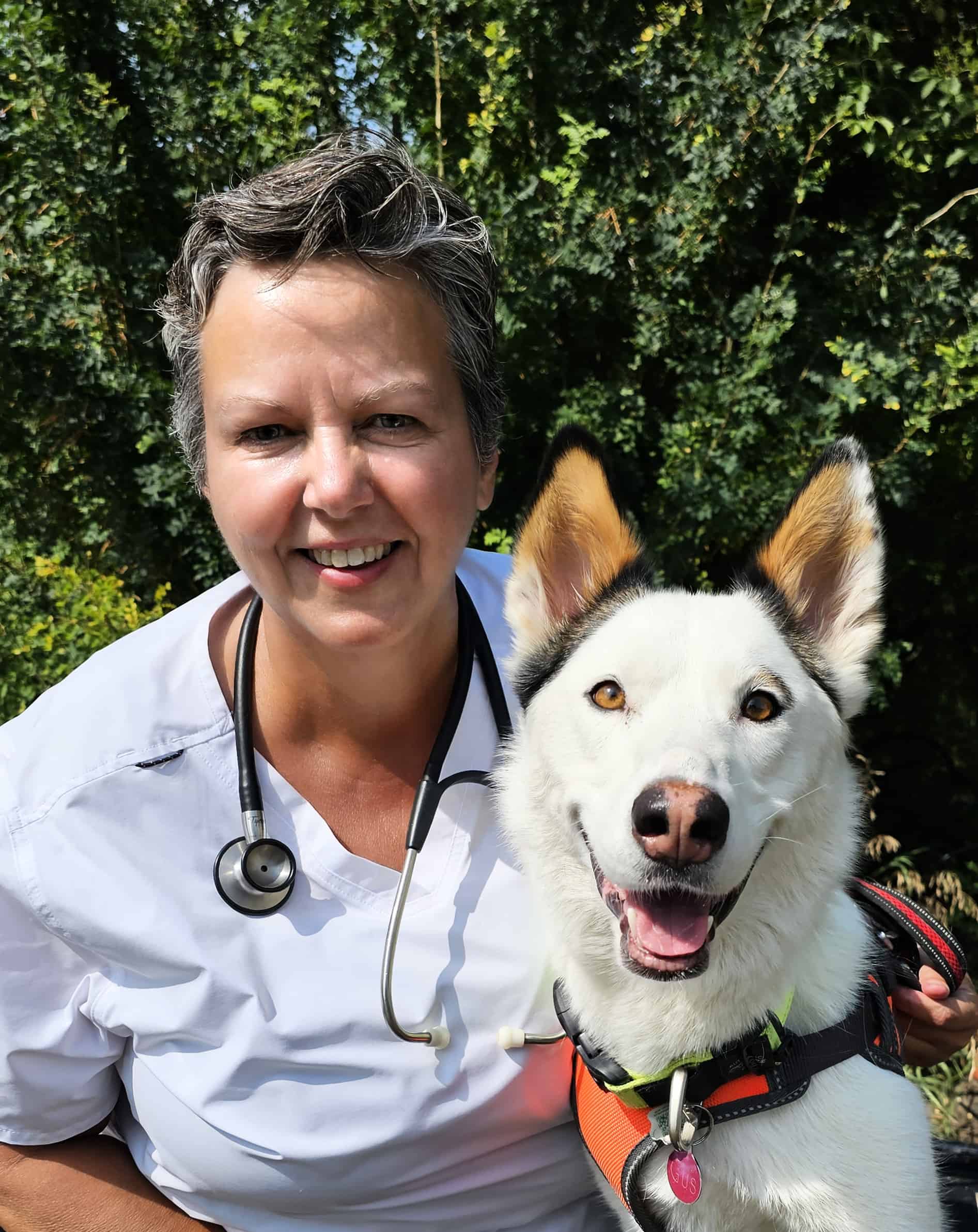Traveling with cats can be stressful, especially if they become anxious or disruptive on the go. If your cat is one of those who get stressed when traveling, you may be wondering what you can do to keep them calm.
The best way to keep your cat calm while traveling is to prepare for the trip in advance. Making sure your cat is comfortable in its carrier and use of a calming pheromone spray are just the first steps. If your cat is a known bad traveler, talk to your vet about giving your cat a sedative.
In this article, we provide helpful tips and advice to help you keep your cat relaxed and comfortable throughout your travels.
Do You Have To Take Your Cat On The Trip?
Of course, sometimes the cat HAS to travel – otherwise, how would you get it to the vet?
But if the purpose of your trip isn’t related to the cat itself, consider carefully if you can leave your cat at home.
Even in the best of circumstances, cats should not be left alone longer than a day or two without at least having someone to come check in on them. But there are other options, such as having a pet sitter come in to care for the cat during your trip or even taking them to a boarding facility.
However, if bringing your cat on your trip is unavoidable, there are some steps you can take to keep them calm and comfortable throughout the journey.
Is It Stressful For A Cat To Travel?
Cats are creatures of habit and getting them out of their comfort zone can be stressful for them. Unless they are seasoned travelers, most cats find travel to be very stressful.
No matter how well your cat is trained, it’s important to remember that cats don’t understand what is happening. They may become anxious or scared when placed in a moving car or another unfamiliar environment.
Fortunately, there are several ways to make the experience less traumatic for your pet.
Tips To Keep Your Cat Calm While Traveling
Plan In Advance
The key to keeping your cat calm during travel is planning in advance. Make sure you have everything you need for the trip, such as a carrier and any necessary supplies, so that things don’t become overwhelming at the last minute.
Here’s a list of things to take care of well in advance of your trip:
1. Cat carrier: Make sure that you have a cat carrier on hand and let your cat get comfortable with it well in advance. If your cat is already comfortable getting into the carrier on its own, that’s one less stressful event in your trip to deal with.
2. Familiarize your cat with car travel: If your cat is not used to traveling in a carrier or car, familiarizing them with both beforehand can go a long way towards helping them stay calm during the journey. Click here to read more on how to do this.
3. Get a calming pheromone spray for cats: The feline cheek pheromone has a calming effect on other cats. There is a synthetic version that also works to calm cats that can be sprayed in the carrier to help keep your cat relaxed while they travel.
4. Stock up on calming music: There is music that is written specifically for its calming influence on cats. It can be used during car rides, vet visits, or any other stressful situation. In a pinch, however, almost any calm classical music will do.
5. Talk to your vet about cat sedatives: It’s always best to be prepared. If you know your cat is a bad traveler – or if you don’t know that it is going to be a good traveler – a veterinary-prescribed sedative for your cat can be a lifesaver when nothing else works to calm your cat.
6. Check with your vet if your cat has any health issues: If your cat has any health issues or is very old, check with your vet before you plan to travel with them. The stress of traveling can make underlying health issues worse, so you want to make sure your cat is healthy enough to travel.
7. Microchipping: Make sure your cat is microchipped and the information is up to date before you travel. If your cat should escape or get lost during the journey, this could be their ticket home.

Make Sure You Have Everything Your Cat Needs For The Trip
If you are only taking your cat on a short trip, then your packing list is short. A comfortable cat carrier with a familiar blanket in it is really all that is needed. And, of course, the cat!
For longer trips, you need to plan accordingly. Make sure you are stocked up on essentials to last the length of the trip plus extra in case of unexpected delays.
Here is a list of items you may need on longer trips with your cat. Make sure these items are easy to access for use during your trip. For shorter trips, you will also likely want to pack most of these things along so they are available when you get to your destination.
1. Cat food: You want to make sure they are getting their normal diet, to avoid tummy upsets on the trip. Package individual-sized portions in plastic baggies for convenience.
2. Water: Water from different sources tastes different. Bringing along water from home can eliminate this as a potential stressor for your cat.
3. Food and water dishes: Make sure to pack unbreakable food and water dishes for the trip. Collapsible dishes are a great choice for travel.
4. Portable litter box and litter: There are several convenient and portable litter box options to choose from. Make sure you get one that has a lid to prevent litter from spilling out of the box on the journey.
5. Toys and treats: A few familiar toys and extra special treats will keep your cat distracted and entertained during the trip.
6. Collar and identification: Traveling cats should always have their ID with your contact information attached to their collar just in case they get lost.
7. Leash and harness: At some point during the trip you are probably going to have to take your cat out of its carrier. Using a leash and harness helps make sure they do not escape during these times.
8. Pet wipes: It’s always a good idea to have wet wipes on hand in case you have to clean up a mess. Baby wipes are a readily available option, or you may consider wet wipes designed specifically for use with pets.
9. Health certificates: If you are traveling by air, or crossing international borders, vaccination and health certificates will be required.
10. Feliway: Feliway can help keep your cat calm while traveling. It is a synthetic hormone that can be used in the carrier to help keep your cat relaxed while they travel. Spray it in the carrier and wait 15 minutes before putting your cat inside.
11. Calming music: There is music that is written specifically for its calming influence on cats. It can be used during car rides, vet visits, or any other time when your cat needs something to help keep them calm.
12. No food for 4 hours before traveling: Having an empty tummy will help minimize the chances of your cat getting motion sickness on the journey. On the other hand, when traveling by air most airlines require that animals have had food and water no more than 4 hours before getting on the flight.
13. Sedatives: If you plan on sedating your cat, administer the sedative half an hour to an hour before departing.

Calming Your Cat While Traveling
Most of what you can do to keep your cat calm while traveling happens before you hit the road, as we’ve described above.
If your cat is upset during the trip, at this point you do not have a lot of options.
You can try playing calming music or talking to your cat. If you are not driving a vehicle, you can also try putting your fingers through the bars of the carrier so that your cat can rub their head against them. This provides comfort and will work for some cats but not all.
If 4-5 hours have passed, the calming pheromone will have worn off and you can try spraying the inside of their carrier again. Do not spray it on the cat, do not spray the carrier while the cat is in it, and wait 15 minutes after spraying before putting your cat back in.
Try covering the cat carrier with a light blanket. Sometimes preventing them from seeing their unfamiliar environment can help. But it can also make the situation worse, so you will have to see what works for you.
Although cats can hold their pee for 24 hours or more, it still doesn’t hurt to take bathroom breaks on long road trips.
Find a safe place to park, place a travel litter box and water in an accessible location, and then let your cat out of the carrier while inside the car. Never leave it alone unsupervised, and do not open the doors while it is out of the carrier.
Finally, always remember what NOT to do! Do not take your cat out of its carrier in a moving vehicle if they are upset. Not only does this reinforce unwanted behavior, but it puts both the cat and the driver at risk.
Tips For Getting Your Cat Used To Car Rides
Start by making sure your cat is comfortable getting into her carrier. Place a familiar blanket in it and some of her favorite treats, and let her enter it at her own pace. Repeat this over time, gradually increasing the length of time she spends in the carrier.
Once your cat is comfortable in her carrier, introduce her to the car. Buckle her carrier into the car and just sit with it running for a few minutes to get her used to the sound. Take her back inside and let her out before she gets upset.
Progress to taking a few short drives with her to get her used to car travel, making the trips a little longer each time. The objective always is to end the session before she gets upset since letting her out of her carrier when she is upset is only rewarding undesired behavior.
Try different things to see what helps calm her. Playing music helps some cats, but upsets others. Some like to be able to see out of their carrier, while others do better with a light blanket over top. See if she is calmer with someone sitting next to her talking to her.
This process will also allow you to see if your cat gets carsick. Drooling, licking her lips, excessive vocalization, and vomiting are all signs of motion sickness in cats. If this is the case, speak to your vet about medications that can help reduce her symptoms.
When you take your cat on a car trip, they are being taken out of the familiarity of its home and bombarded with new smells, sounds, and sights. With frequent travel, many cats adjust to this quite well. Cats that travel infrequently are far less likely to ever become good travelers.

In Summary
From making sure your cat is comfortable to providing them with calming music, there are lots of tips for successfully traveling with cats.
Using calming pheromones, providing comfort by letting them rub their heads against your fingers through the carrier bars, covering their carrier with a light blanket, and providing breaks from travel for both you and the cat are just a few of the things you can try to reduce your cat’s travel anxiety.
With frequent travel, your cat can eventually become a pro traveler and you can both enjoy car trips together.


